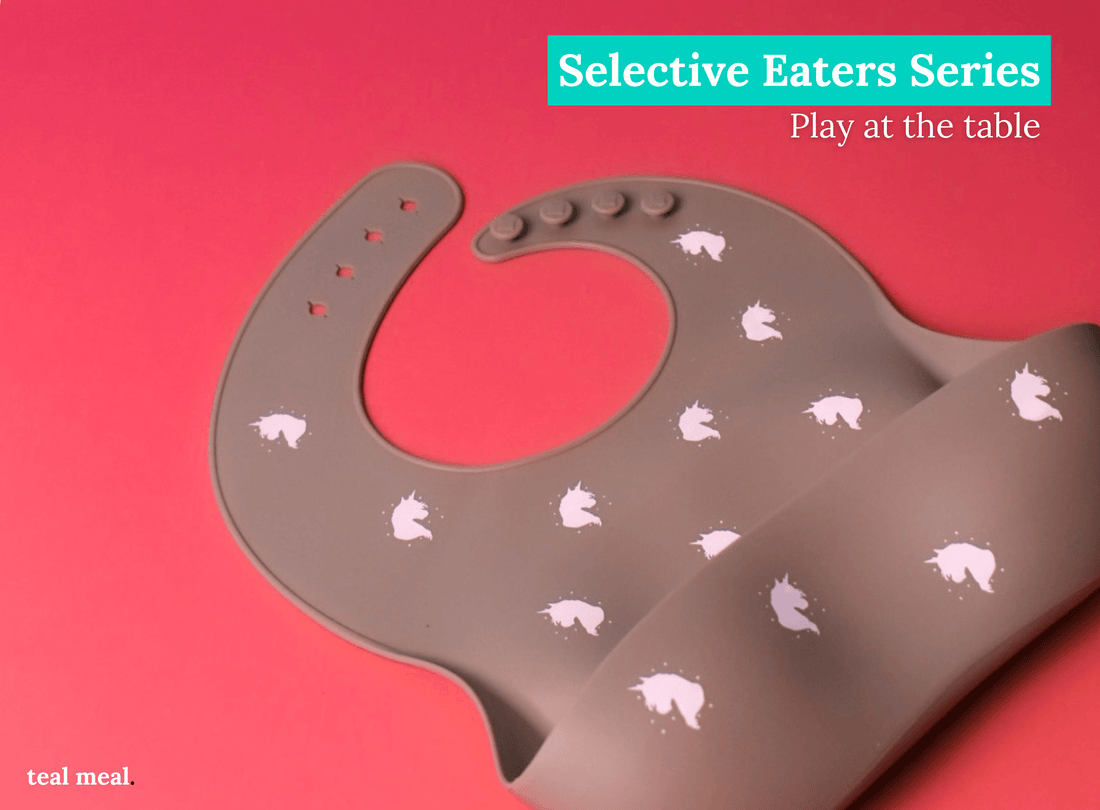
Play at the table
Selective Eaters Series
Play at the table
By Colene Stoernell MS, RD, LDN
How many times have you been told NOT to play with your food growing up? I have heard it quite a few times throughout my childhood.
As parents, we often carry forward the parenting style/techniques that we grew up with without even knowing it. Being told not to play with your food is one of the top “rules” that seem to have carried on through time.
So, why can't we play with our food?
Let’s explore why we should allow it. Kids learn through play during the younger years as they are figuring out their worlds and pushing their limits. Play is a great way for children to explore unfamiliar things (like new foods) in a non-threatening way and on their terms.
Children are quick to notice when a parent wants them to do something and refusing to eat or try a new food is something they have control over. Food play and food art allow children to have a sense of control over their food choices and interactions with foods.
When you turn new food exposures into play, there is no pressure to eat, just fun.
This concept enforces the need for play at the table. Don’t get me wrong, it takes a lot of self-control to allow children to play with their food, with the biggest deterrent being the mess. I have often had family members cringe during therapy sessions at the mess their child was making, but after seeing how their little one interacted with a new food or even tried it, they were encouraged by the concept.
The mess can be downplayed a little by using a bib with a deep front pocket such as the teal meal bibs. These bibs help keep some of the food off the child and the floor.
In addition to playing with foods, I often encourage having your child be involved in the new food choice.
This does not mean asking your child what foods they want to try, as they will not know. Children only know what they have been exposed to.
Giving your child a choice between 2-3 new foods to try allows for exposure to new foods and gives them a sense of control. This technique can be used at home or the grocery store by having them help pick the new food to try.
When incorporating play and new foods into the meals, starting small is key to avoid overwhelming your child. This usually translates to choosing one meal each week. The food exploration can start with food play during meal prep and continue throughout the meal.
It is also important to use your child’s interests as a guide for play.
I have had ”dinner toys” in a bin by the table that was clean for use with food. Small dump trucks are a great way to carry peas to the plate or just around the table.
Other ways to explore food at the table are making faces with veggies, using olives for finger puppets, using macaroni shells as hats for peas, and using broccoli as a tree. Let your inner child loose and have fun with it.
|
Colene Stoernell MS, RD, LDN instagram: b.welltogether |
Colene Stoernell is a registered dietitian/nutritionist currently residing in Oregon who works with individuals and families with nutritional struggles. Throughout her career, she has had the pleasure of helping people in many areas of life. Her current areas of specialty are feeding-related disorders, IBD/IBS, Celiac disease, and intuitive eating. She is also the mother of a child with selective eating habits and oral sensitivities and therefore has a personal understanding of the challenges families face with children with feeding concerns. In her spare time, she enjoys being very active with her family in any outdoor activity.

